Superabsorbent Polymers Superabsorbent Polymers (SAP)
Basic Information
Superabsorbent polymers (SAP) can absorb several hundred to several thousand times their own weight in water.
SAP have a wide range of uses including not only everyday items such as disposable diapers, pet sheets, air fresheners, and disposable hand and body warmers, but also in fields such as medicine and health care, greenery, and civil engineering.
Compared to similar water-absorbing materials of pulp and sponges, SAP are highly absorbent and do not easily lose liquid (syneresis) even when pressure is applied.
Details of Functions
Water Absorption Principle
When SAP come into contact with water, the difference in ionic concentration between the inside of the SAP and water generates osmotic pressure; SAP uses this difference in osmotic pressure to absorb water.
The affinity between SAP and water also facilitates the absorption of water; however, this affinity does not significantly affect the water-absorbing ability of SAP to the extent that osmotic pressure does.
This water-absorbing ability can also be controlled by the crosslinked structure of SAP.
This water absorption principle is the same principle when the liquid being absorbed is an aqueous solution.
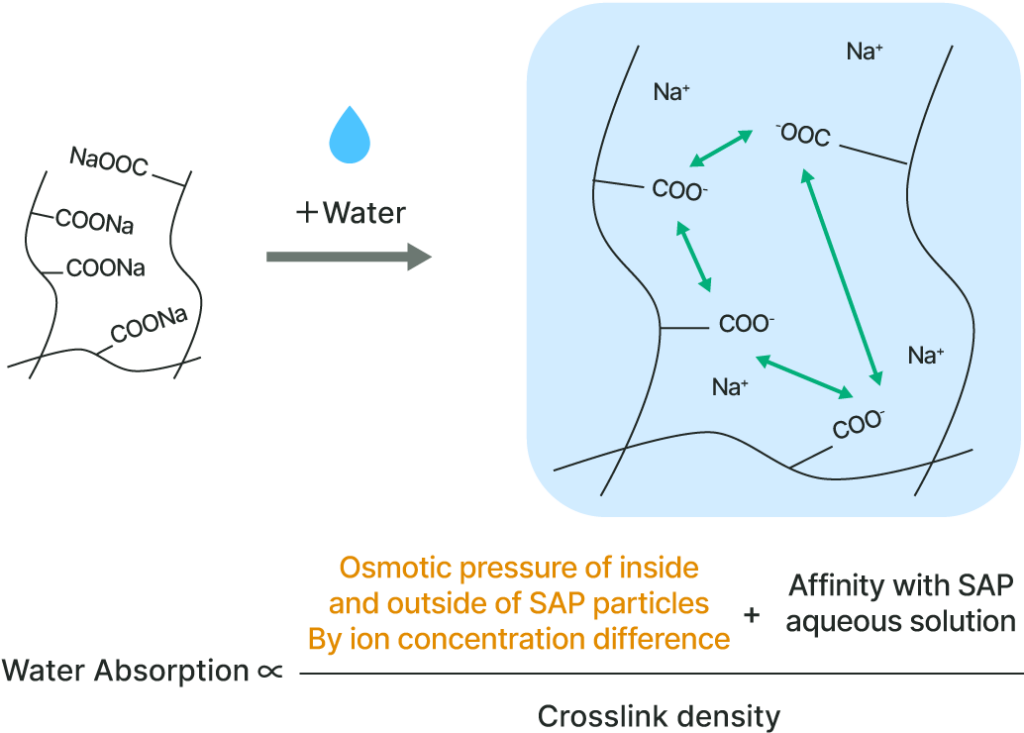
Features and Properties
Global Top Share
Nippon Shokubai’s SAP boasts a top level of share in global markets.
About one quarter of the disposable diapers manufactured in the world use SAP produced by Nippon Shokubai.
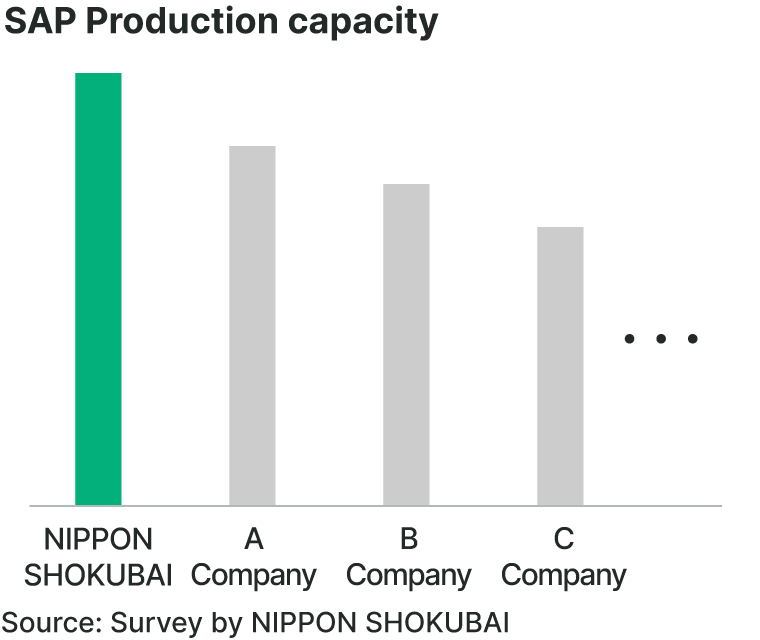
Global Production System
Nippon Shokubai produces SAP at five bases around the world.
(Japan, China, Indonesia, USA, and Belgium)
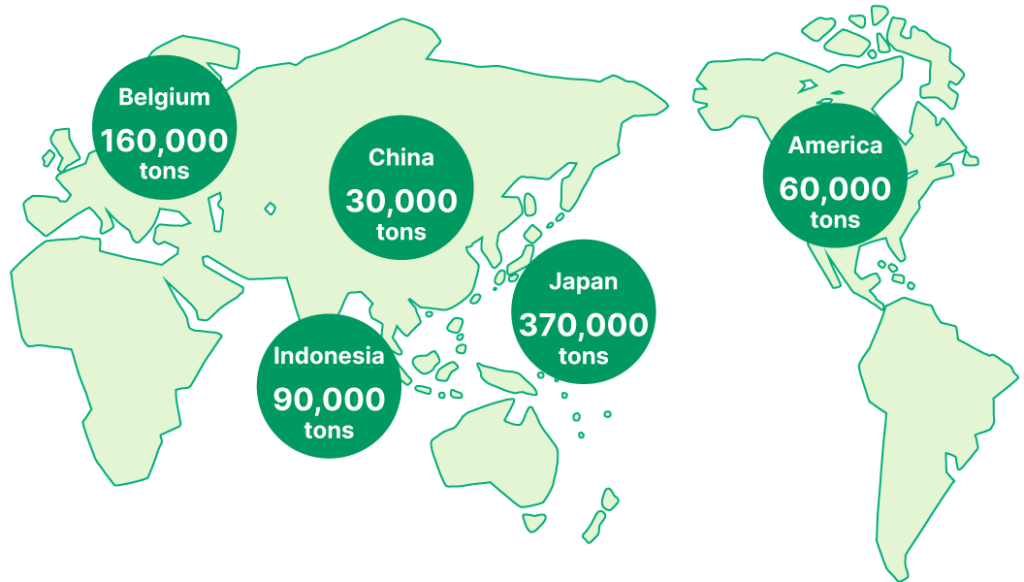
Integrated Production Starting with the Raw Material of Acrylic Acid
Nippon Shokubai produces SAP in an integrated system, starting with the raw material of acrylic acid.
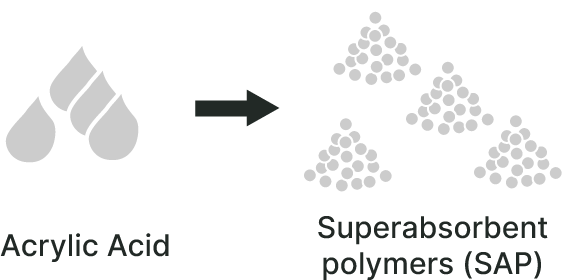
Development of Sustainable SAP
Nippon Shokubai is developing sustainable SAP that contributes to lessening the environmental load.
Biomass Certification
The SAP produced at the Belgium subsidiary NIPPON SHOKUBAI EUROPE N.V. has acquired Biomass Certification from the International Sustainability & Carbon Certification (ISCC) Association.
-1.png)
Development of New Recycling Technologies for SAP
Nippon Shokubai has jointly developed new technologies for recycling superabsorbent polymers (SAP) in used disposable diapers.
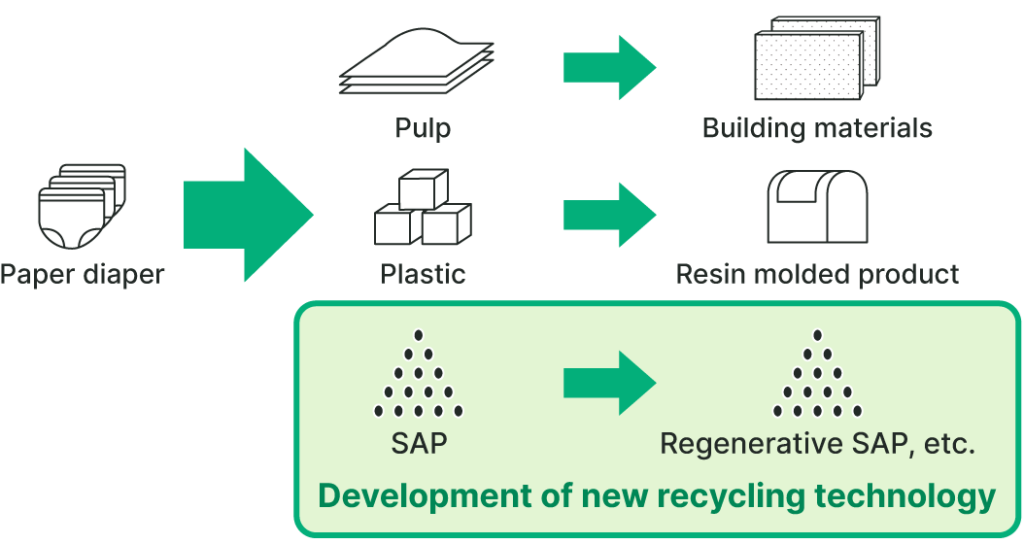
Extensive Lineup
Nippon Shokubai has a lineup of several SAP products, which are roughly sorted into the three types listed below.
We are able to suggest the appropriate SAP type and product to suit your requirements. Please freely inquire with us for details.
| Product Name | AQUALIC™ CA | AQUALIC™ CS | ACRYHOPE™ | |
|---|---|---|---|---|
| Features | General-purpose type (Daily-use items) | Salt-tolerant type (Civil engineering) | For water retaining agents (Horticulture) | |
| Appearance | White powder | White powder | White powder | |
| Absorption Amount (g/g-SAP) | Deionized Water | 300-1,000 | 100-200 | 200-300 |
| Normal Saline Solution (NSS)*1 | 30-60 | 30-40 | ー | |
| Artificial Seawater*2 | 10-20 | 20-30 | ー | |
| Calcium Chloride Aqueous Solution*3 | 1-5 | 10-15 | ー | |
| Average Particle Diameter (μm) | 300-450 | 10-100 | 800-1,000 | |
| Examples of Applications | Disposable diapers, Feminine hygiene products, Pet sheets, Refrigerants, Disposable hand and body warmers, Waste liquid solidifiers, Air fresheners, Drip sheets | Water blocking agents for civil engineering,Water blocking agents for cables | Water retaining agents for horticulture, growing grass, and planting trees and shrubs for greenery | |
*2:Aqueous solution of 43.0 – 48.0 mS/cm electrical conductivity containing univalent – bivalent ions
*3:5% calcium chloride aqueous solution